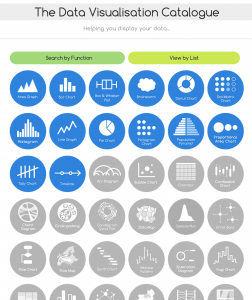Love it or hate it, social media is where you need to be these days.
Not only is it an open forum, placing you right where your customers hang out, but it’s also a way to interact with them on a more personal level.
Yet, it also comes with a major disadvantage: you can’t control what people say or post on the various social media channels.
And that can lead to a social media crisis.
A social media crisis is a sudden negative activity that can affect your brand’s reputation and adversely affect how you do business.
Even one complaint or negative sentence can send your brand identity into a spiral.
How you recover from that will make all the difference in your brand’s reputation. What you need, then, is a social media crisis management plan.
A social media crisis management plan is a focus on what can go wrong, what the threats may be to your particular brand overall, and what actions to take when these occur.
Let’s face it: it’s not if this will ever happen, but when. Add the what-ifs to your social media marketing strategy so you can be more prepared to respond.
Here’s what you’ll learn in this blog post:
- What are the Four Phases of All Crisis Management?
- 5 Types of Social Media Crisis
- What Constitutes a Social Media Crisis?
- How Do You Handle a Media Crisis?
- 4 Examples of a Social Media Crisis and What We Can Learn with Them
- Wrap Up: Avoiding the Worse with a Social Media Crisis Management Plan
What are the Four Phases of All Crisis Management?
Crisis management can be broken down into four phases.
Preparedness Phase
You’ve heard it before somewhere, but it’s worth repeating here. Always be prepared.
In the case of social media crisis, being prepared means identifying and understanding what risks and threats exist to your company and brand.
While you may be unable to predict every negative scenario, you can still formulate a list of how and where those threats might come from.
Consider both external and internal threats. These can range from customer complaints and world events to employee dissatisfaction and product issues.
Monitor your social media accounts to provide clues to help you stay prepared.
Once identified, formulate steps to take should they occur to get out in front of the crisis.
Responsiveness Phase
Immediately following a crisis situation, a swift response is essential.
Don’t just respond to respond, however. Back up what you say with solid information. Be transparent.
In many instances, you may need more time to research an issue or formulate a full response. For these, acknowledge the complaint or issue and let them know you are looking into it further.
Reassuring Phase
Once identification of the issue is discerned, reassure key audiences that you are aware of it and will keep them in the loop on what you find.
Apologies aren’t enough. People want to see action and reassurance that you take this issue seriously and are dedicated to resolving it in some acceptable way.
Provide updates, and keep everyone informed as to where you are in the investigation or research.
If you want the public to continue trusting you, you need to show up.
Recovery Phase
Once a conclusion is reached, focus on restoring a normal way of interacting with customers.
Your long-term reputation is at stake, so remain a sense of calm now and continue to recover from the crisis and prevent any reoccurrence.
As you go along, listen in on customers on social media to learn what you are doing right and any potential wrongs.
Use what you learn the next time, if there is a next time.
Recovery involves both your immediate response and follow-up actions to the crisis. It also involves long-term implications.
How will your brand adapt and change for the better because of this crisis experience?
Impart the lessons learned and use them to your advantage to make your brand better and positively influence your digital marketing strategy.
5 Types of Social Media Crisis
While each social media crisis can be unique, most of them can be categorized as one of the following.
1. Multi-Channel
A multi-channel crisis is the most dangerous category to fall into because it can quickly go viral and negatively affect your brand.
Negative publicity pours in, impacting your brand immediately, especially if not acknowledged and responded to in a quick manner.
2. Emerging
An emerging crisis is one looming but not yet full-blown.
These need to be anticipated, acknowledged, and dealt with as quickly as possible to avoid further damage.
If not, your customers and any potential customers may make instant decisions to disassociate themselves from your brand and go to a competitor.
3. Industry
Rarely does a company stand alone in the marketplace.
This means you need to stay aware of what is happening with vendors and competitors in your industry.
If they experience a social media crisis, it can negatively affect you as well.
When these happen, monitor what occurs and learn from them in case you are involved in something similar in the future.
4. Fake News and Misinformation
Rumors and misinformation can quickly get out of hand, thanks to the speed of sharing on social media.
Attend to these swiftly to limit damage to your brand. You’ll need to debunk any fake news, misinformation, or rumors effectively.
5. Social Activism
Social activism in itself isn’t bad. But when it affects your brand and how you do business, it can be damaging.
Activists can be unpredictable and difficult at times. Whether it’s a large group or just a few protesting, the effects on social media can be challenging.
Couple this with a celebrity or influencer spokesperson, and you have a different type of challenge as well.
What Constitutes a Social Media Crisis?
Knowing what constitutes a social media crisis can put you one step ahead. Stay aware of the following;
Insensitivity
One of the most common crises on social media is the use of insensitive comments.
If a company is out of touch with its customers and what matters to them, a crisis can quickly escalate.
Sometimes this truly is a mistake, unaware of the effect a comment can have on different demographics. Other times, it is a complete disregard for others and clearly shows.
Product Failure
In cases where something about your product fails, you can expect negative press to not be far behind.
Even if one person has a negative experience with your product and posts about it on social media, it can spiral into more.
Others may come out and say the same thing happened to them.
Still, others may feel appalled, believing you lied about the product in the first place.
Criticism
Another common social media crisis is consumer or customer criticism.
This criticism may be about the performance of your product or service, how you handle a particular situation, or even what you post which some may find offensive.
Staff Errors
Employee errors, whether intentional or not, can lead to social media backlashes.
For example, one year, Walmart’s promoting of their back-to-school sale included a photo of a firearm display.
This clearly offended many people, and a storm of negative posts followed.
Site Outages and Broken Links
Everyone experiences a site outage or broken link at some point, but these can become a serious issue for your audience.
Most often, this type of social media crisis occurs when you have a special offer available for a limited time. If so, complaints and shares can arise on social media from annoyed consumers.
Some may even think you did this intentionally to avoid too many sales at the lower price or too many free downloads.
You’ll need to respond quickly with an apology and solution to save face.
World Events
Today the reality is that worldwide events can lead to crisis. From landslides to pandemics, any of these can affect how you respond and adapt to the needs of your audience.
Stay alert to news of world events, and respond in sensitive and empathic ways.
This may require you to shift focus for a while.
How Do You Handle a Media Crisis?
The best way to handle a social media crisis is to prepare ahead of time and take steps to ensure a preferred outcome.
Specifically, you’ll need to do the following:
Develop a Social Media Policy
Start by putting in place a social media policy.
While not all social media policies will be the same because not all organizations and industries are the same, common elements include:
- Clear social media usage guidelines.
- Expectations for social media accounts.
- Parameters for employee postings.
- Your brand voice, to be carried across all platforms.
- Copyright guidance, for sharing another’s content.
- Stakeholder and individual responsibilities.
- Chain of command and approval procedures for responses.
- Escalation measures.
Make sure you communicate this policy to all employees and new hires and make adjustments as warranted.
Create and Stick with a Communications Plan
Once your social media policy is in place, create a process for how to respond to a crisis.
Include steps for every level within the company, from executives to managers to staff, outlining the proper communication procedures to follow.
Define roles and responsibilities, establish an approval process, and distribute to all employees.
Having this social media crisis management plan in place allows you to respond quickly, avoiding the questions of who should respond and how and losing valuable time.
Protect all Your Social Media Accounts
At times, it may be your lack of protective measures to your social media accounts that get you in hot water.
Establish strong passwords and assign them to a select few.
Revoke access or change passwords when someone leaves the company or switches to a new position.
Attempt to eliminate any potentially disgruntled employee from posting something negative or confidential on your company’s social media channels.
Determine What is a Crisis for You
Not every non-flattering comment or share online is worthy of classifying as a crisis.
If more than a few people make a similar comment, however, you may need to take a closer look. It may be a crisis on the edge of turning into something bigger.
Determine what is normal for your brand and followers. From there, you can identify what constitutes a crisis going forward.
Benefit from Social Listening
Include social listening to stay in the know about what people are saying about you and if their sentiment about your brand is shifting in any way.
Use it before a crisis occurs, immediately following one, and over the long term.
In addition to constant social media monitoring, track keywords and assign someone to monitor them.
Adjust or Pause Scheduled Posts
When a crisis occurs or is on the predictable horizon, act fast by pausing any scheduled posts.
Take charge of all social media accounts and be responsive to current events.
Situations may warrant a new message, such as many experienced during the 2020 shelter-in-place orders.
Failing to adapt puts you at risk of appearing insensitive and only concerned with attracting buyers.
Avoid Confrontation
After an initial response acknowledging the issue, you’ll need to continue to interact with people on social media.
Stay aware of those who continue negative comments but don’t argue. Avoiding confrontation is a must online.
If negative people continue to push, try to guide them to a more private conversation on email or phone.
Keep Internal Communications Flowing
Internal communications during a social media crisis are critical. Keep everyone up-to-date on what is happening.
Provide guidelines on what everyone is to do, including referring any outside inquires to your PR department and avoiding commenting on the situation itself.
Learn from the Crisis
Once the social media crisis fades, identify what you can learn from it. Discuss every aspect, from how it began to its final resolution.
What worked and what didn’t? Where can your efforts improve?
Learning from past experiences and adapting your social media policy, if necessary, is key to helping you address any future crisis.
4 Examples of a Social Media Crisis and What We Can Learn with Them
To give you a little more perspective on the potential kinds of crisis, here are four examples to learn from.
Nestlé
In 2010, the environmental activist group known as Greenpeace launched a targeted campaign against Nestlé. They claimed that sourcing palm oil from Indonesia endangered the native orangutans.
Greenpeace posted a video parodying the KitKat commercials, changing the catchy jingle to “give orangutans a break.” This video then spread like wildfire across social media channels.
How did Nestlé respond? They simply removed the video, citing Greenpeace for copyright infringement.
They went even further down the wrong path by deleting any comment mentioning it. In other words, they wanted the problem to disappear.
You can imagine how that went over! Their response, or lack of one, gave people more to talk about.
What can you learn from this crisis?
First, accept that negative opinions about you can make their way to social media and avoid negatively reacting.
Secondly, problems like these won’t just go away because you want them to.
Acknowledge that you are aware of the complaint and are looking into it. Then go out and do just that, look into it.
Explain where you are basing your response on and why.
From there, you may need to find ways to alleviate the impact your product is having and convey this on your social media channels.
KLM
A branch of the Dutch-owned airliner KLM once tweeted information on the fatality rates on airplanes based on seating locations.
While this is informative, especially for those who experience apprehension about flying, it’s the way KLM presented it on social media that got people riled up.
The tweet insensitively characterized it as a “fun fact,” with a tag for #TriviaTuesday.
This error in judgment set social media ablaze and the company scrambling.
In the end, KLM apologized for the insensitivity and deleted the tweet.
Obvious lesson to be learned here is to always post content in good taste and consider how it can appear.
Nike
Product failure is one thing, but when it happens in the public eye, it can escalate into a crippling crisis for your brand.
Nike experienced just this type of crisis following a televised Duke University basketball game.
Team member Zion Williamson’s Nike shoe fell apart during the game, leading to a knee injury. Social media channels instantly blew up, spreading the news at lightning speed.
While users sympathized with Zion and sent him good wishes, there was no denying that Nike would be on the negative end of this event.
As a result, trust in the shoe brand took a hit, and its stock began to sink.
Instead of ignoring it, Nike took a proactive approach in an official statement which also wished Zion good luck on his recovery.
Additionally, in the statement, Nike assured people that they were looking into what happened in an attempt to alleviate concerns.
Investigators were sent to the stadium where the injury happened, then to the factory in China where the shoe was manufactured.
Compiling everything they learned, the investigators presented suggestions to the company, which led to a special pair of shoes for Zion.
Lessons to be learned here include the need to accept that the unexpected can happen. When this happens, act swiftly and remain considerate of those involved.
Sephora
How someone is treated often can lead to a social media backlash.
Sephora experienced this back in 2019 when singer SZA visited one of their stores and was accused of trying to steal something by an employee.
The singer took to social media, Twitter to be exact, telling what happened. Her numerous fans quickly defended her, appalled at the behavior of the Sephora store employee. Some even accused her of racial profiling.
Emotions ran high, and Sephora needed to act at the corporate level.
They began by apologizing to SZA on Twitter, thanking her for letting them know about it. Sephora then went further and said they were already in the process of investigating the situation for resolution.
Within about a month, Sephora announced they would be requiring centralized diversity training for all stores and employees. However, they avoided attaching this announcement directly to SZA’s experience.
Lessons learned here include staying proactive in how you respond.
Don’t shy away from the tough, emotional issues or the use of social media to respond. Make people feel heard in their concerns and show that you are open to improvements.
Wrap Up: Avoiding the Worse with a Social Media Crisis Management Plan
With a social media crisis management plan in place, you and your organization will be equipped with everything you need to respond quickly.
Start with the all-important first step of creating a better social media strategy to help lower the chances of a crisis occurring.
Learn more about how to rock your social media strategy to avoid crisis!

![[Rock NA] Content Planning Kit Content Planning Kit](https://rockcontent.com/wp-content/uploads/2022/07/Blogpost-banner-A-750x200-1.png)




![What is Amazon SEO? [+ The Amazon SEO Tools You Need to Use]](https://rockcontent.com/wp-content/uploads/2021/11/amazon-seo-tools-300x158.png)


